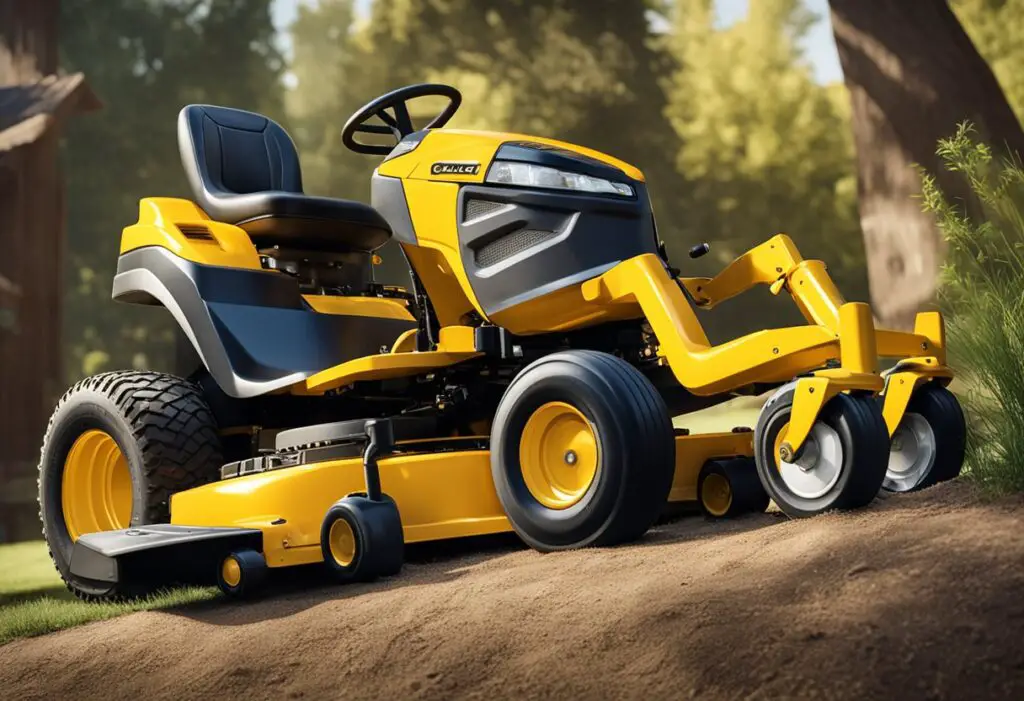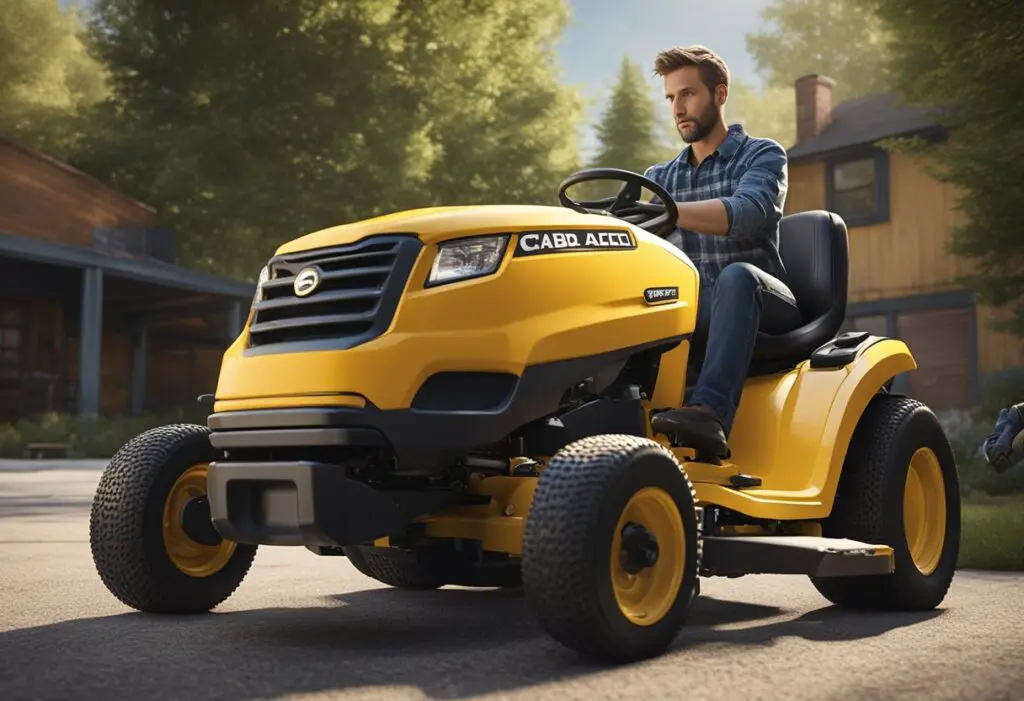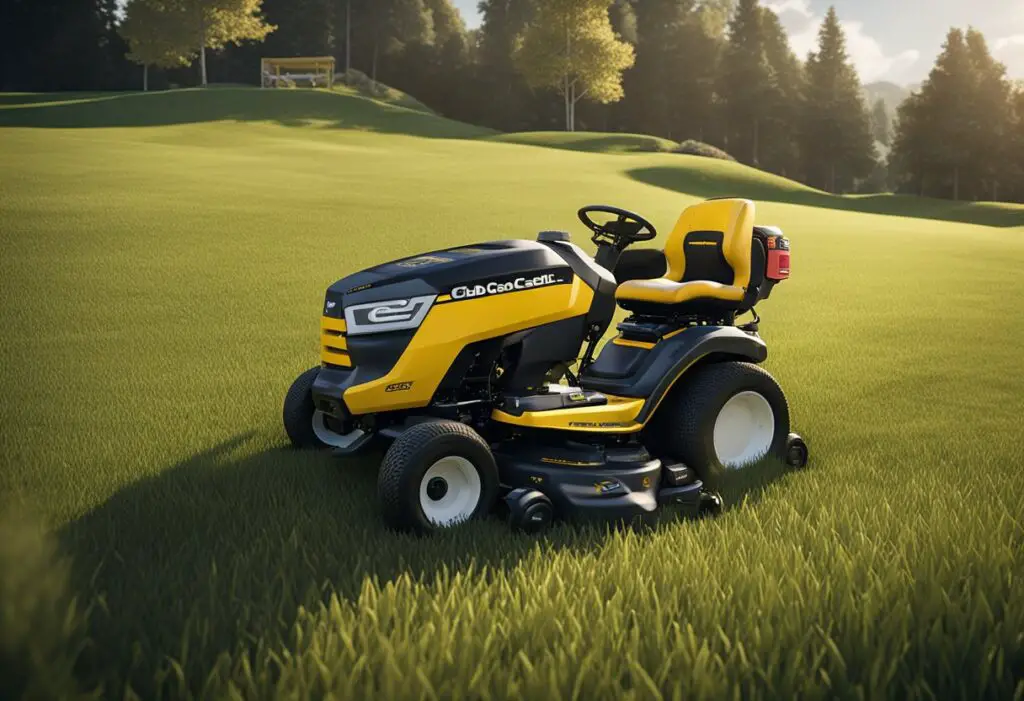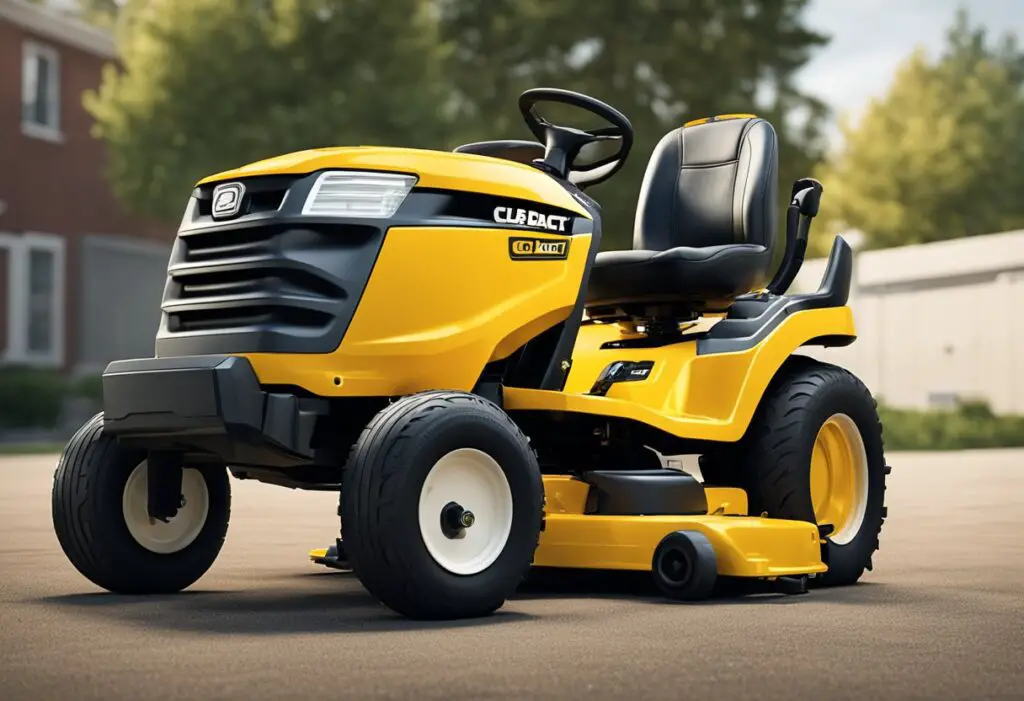Cub Cadet is a well-known brand of lawn tractors and mowers. However, like any other piece of machinery, Cub Cadet mowers can experience issues, such as reverse problems. Reverse problems can be frustrating and can prevent you from mowing your lawn efficiently. Fortunately, there are several causes and solutions for Cub Cadet reverse problems.

One of the primary reasons for reverse problems in Cub Cadet equipment is low or contaminated transmission fluid. Transmission fluid plays a critical role in lubricating and cooling the transmission, ensuring smooth gear transitions, including the reverse function. Another common cause of reverse problems is a faulty shift control linkage or a problem with the pulley system. If the shift control linkage is not adjusted correctly, it can prevent the mower from shifting into reverse. Similarly, if the pulley system is damaged or worn out, it can cause the mower to lose power when reversing.
If you are experiencing reverse problems with your Cub Cadet mower, it is essential to troubleshoot and identify the root cause of the issue. By doing so, you can determine whether it is something you can fix yourself or if you need to seek professional assistance. In the following sections, we will explore some of the possible causes and solutions for common Cub Cadet reverse problems.
Understanding Cub Cadet Reverse Problems
Cub Cadet machines are equipped with a well-designed and efficient reverse function that allows users to move the equipment backward. However, sometimes problems can arise with the reverse function, which can be frustrating for users. In this section, we will discuss some of the common issues that can cause Cub Cadet reverse problems and how to diagnose and troubleshoot them.
Diagnosing Transmission Issues
One of the most common causes of Cub Cadet reverse problems is issues with the transmission. If the transmission is not working correctly, the machine may not be able to move in reverse. Some of the symptoms of transmission issues include:
- Grinding or clicking noises when shifting into reverse
- Difficulty shifting into reverse
- Inability to shift into reverse at all
If you are experiencing any of these symptoms, it is essential to check the transmission for any faults. It is recommended to refer to the user manual to locate the transmission and check for any visible damage or wear. If the transmission appears to be in good condition, it may be necessary to seek professional assistance to diagnose and repair the issue.
Identifying Electrical Connection Faults
Another common cause of Cub Cadet reverse problems is electrical connection faults. Electrical connections can become loose or damaged over time, which can affect the reverse function. Some of the symptoms of electrical connection faults include:
- Intermittent issues with the reverse function
- Inability to engage the reverse function
- Reverse function working only intermittently
If you are experiencing any of these symptoms, it is essential to check the electrical connections for any faults. It is recommended to refer to the user manual to locate the electrical connections and check for any visible damage or loose connections. If the connections appear to be in good condition, it may be necessary to seek professional assistance to diagnose and repair the issue.
In conclusion, understanding the common causes of Cub Cadet reverse problems is essential to diagnose and troubleshoot any issues that may arise. By following the steps outlined in this section, users can identify and fix any faults with the transmission or electrical connections that may be affecting the reverse function.
Maintenance and Prevention Strategies
Regular maintenance and prevention strategies can help prevent Cub Cadet reverse problems. Here are some important things to keep in mind:
Regular Cleaning and Inspection
Regular cleaning and inspection of the equipment can help prevent debris from accumulating and causing problems. It is important to clean the mower deck, engine, and other components regularly to prevent debris from entering the hydraulic system or transmission. Debris can cause damage to these components, leading to problems with the reverse function.
Inspecting the equipment regularly can help identify issues before they become major problems. Check the hydraulic and transmission fluid levels regularly, and look for signs of contaminated or old fluid. If the fluid is low or contaminated, it should be replaced immediately to prevent damage to the system.
Proper Lubrication and Fluid Management
Proper lubrication and fluid management are also important for preventing Cub Cadet reverse problems. The transmission and hydraulic systems rely on fluid to operate correctly. If the fluid levels are low or the fluid is contaminated, it can cause problems with the reverse function.
Make sure to use the correct type of transmission and hydraulic fluid for your Cub Cadet equipment. Using the wrong type of fluid can cause damage to the system and lead to problems with the reverse function.
Regularly changing the transmission and hydraulic fluid can also help prevent problems. Over time, the fluid can become contaminated or break down, leading to problems with the reverse function. Follow the manufacturer’s recommendations for fluid changes to keep your equipment running smoothly.
By following these maintenance and prevention strategies, users can help prevent Cub Cadet reverse problems and keep their equipment running smoothly.
Common Mechanical Failures and Solutions

When it comes to Cub Cadet reverse problems, mechanical failures are a common culprit. In this section, we will discuss two of the most common mechanical failures and provide solutions to fix them.
Drive Belt and Pulley Complications
One of the most common mechanical failures that can cause reverse problems in Cub Cadet mowers is a damaged drive belt or tensioner pulley. Over time, the drive belt can wear down or break, causing the mower to lose power or fail to move in reverse. Similarly, a faulty tensioner pulley can cause the drive belt to slip, leading to similar issues.
To troubleshoot and solve these problems, Cub Cadet owners should inspect their drive belt and tensioner pulley regularly. If the drive belt is worn or damaged, it should be replaced immediately. Similarly, if the tensioner pulley is faulty, it should be replaced or repaired as soon as possible.
Hydrostatic Transmission and Gear Troubles
Another common mechanical failure that can cause Cub Cadet reverse problems is a faulty hydrostatic transmission or gear. Hydrostatic transmissions are used in many Cub Cadet mowers to provide smooth, variable speed control. However, if the hydrostatic transmission or gear is damaged or worn down, it can cause the mower to lose power or fail to move in reverse.
To troubleshoot and solve these problems, Cub Cadet owners should inspect their hydrostatic transmission and gears regularly. If any damage or wear is detected, the hydrostatic transmission or gear should be replaced or repaired immediately.
In summary, mechanical failures such as damaged drive belts or tensioner pulleys, as well as faulty hydrostatic transmissions or gears, can cause Cub Cadet reverse problems. Regular inspection and maintenance can help prevent these issues and keep Cub Cadet mowers running smoothly.
Operational Tips for Optimal Mower Performance

When it comes to operating a Cub Cadet lawn mower or lawn tractor, there are a few tips that can help ensure optimal performance and longevity. By adjusting for terrain and mowing conditions, and taking advantage of warranty and support options, owners can maximize the value of their investment.
Adjusting for Terrain and Mowing Conditions
One of the most important considerations when operating a Cub Cadet mower is the terrain and mowing conditions. Different types of grass, slopes, and obstacles can all impact the performance of the mower. To ensure the best results, owners should adjust the mower’s settings to match the specific conditions of their lawn.
For example, if the lawn has steep slopes or uneven terrain, it may be necessary to adjust the speed and cutting height of the mower. Owners should also be sure to clear any obstacles from the lawn before mowing, and to avoid mowing in wet or muddy conditions.
Maximizing Longevity with Warranty and Support
Another important consideration when operating a Cub Cadet mower is the warranty and support options available. Cub Cadet offers a range of warranty and support services to help owners maintain their mowers and ensure optimal performance.
Owners should take advantage of these services to keep their mowers in top condition. This may include regular maintenance and repairs, as well as taking advantage of warranty services when necessary.
By following these tips, owners can ensure optimal performance and longevity from their Cub Cadet lawn mower or lawn tractor. With proper care and maintenance, these machines can provide years of reliable service.
Frequently Asked Questions

How can I adjust the reverse pedal on a Cub Cadet mower?
If you’re experiencing problems with the reverse pedal on your Cub Cadet mower, it may need to be adjusted. To do so, first, locate the reverse pedal adjustment nut, which is located on the left side of the mower’s frame. Loosen the nut with a wrench and push the pedal down as far as it will go. Tighten the nut back up and test the pedal to see if it’s working correctly. If it’s still not working properly, you may need to take your mower to a professional for further assistance.
What are common hydrostatic transmission problems in Cub Cadet mowers?
Hydrostatic transmission problems are common in Cub Cadet mowers, and they can be caused by a variety of issues. Some of the most common problems include low fluid levels, dirty filters, and worn-out belts. If you’re experiencing problems with your hydrostatic transmission, it’s important to check these components first before seeking professional assistance.
Why is my Cub Cadet riding mower not moving forward or in reverse?
If your Cub Cadet riding mower isn’t moving in either direction, it could be due to a variety of issues. Some of the most common causes include problems with the transmission, drive belt, or shift control linkage. It’s important to check these components first before seeking professional assistance.
Can a Cub Cadet riding mower cut grass while in reverse?
Most Cub Cadet riding mowers have the ability to mow in reverse, but it’s important to check your owner’s manual to ensure that your specific model can do so. Keep in mind that mowing in reverse can be dangerous, so it’s important to use caution and follow all safety guidelines when doing so.
What should I check if my Cub Cadet XT1 has slow reverse issues?
If you’re experiencing slow reverse issues with your Cub Cadet XT1, it could be due to a variety of issues. Some of the most common causes include low fluid levels, dirty filters, and worn-out belts. It’s important to check these components first before seeking professional assistance.
Are there known transmission problems with Cub Cadet XT2 series mowers?
While there have been some reports of transmission problems with Cub Cadet XT2 series mowers, these issues are relatively rare. If you’re experiencing problems with your mower’s transmission, it’s important to have it checked by a professional to determine the cause and the best course of action.
Leave a Reply